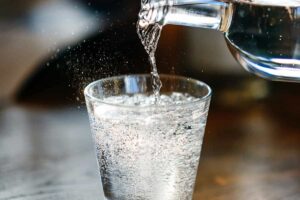Water, the most common solvent, plays a vital role in our everyday life, especially in the field of medicine. Have you ever wondered, can you dissolve medication in water? or how does the process affect UTI medication dissolve in water? Well, you're in the right place.
This article delves into the fascinating world of medication administration, focusing on dissolving and reconstituting drugs with water. We'll also explore the specific method of medication pour water in bottle for reconstitution. Get ready to dive into the crucial aspects of how water interacts with different medications, enhancing or affecting their effectiveness.
Dissolving Medication in Water: Basics Explained
Many often wonder, can you dissolve medication in water? The simple answer is yes, but it depends on the medication's formulation.
 Dissolving medication in water can significantly aid in ease of administration, especially for those who have difficulty swallowing pills or for children. Water can also help in the faster absorption of the medication, potentially leading to quicker onset of effects. However, it's crucial not to attempt this with every medication without professional advice.
Dissolving medication in water can significantly aid in ease of administration, especially for those who have difficulty swallowing pills or for children. Water can also help in the faster absorption of the medication, potentially leading to quicker onset of effects. However, it's crucial not to attempt this with every medication without professional advice.
Some medications are designed to be released slowly over time and dissolving them could cause them to be absorbed too quickly. Always consult the information leaflet provided with your medication or a healthcare professional before altering the form of any medication. Remember, the key here is safety and ensuring the effectiveness of your treatment.
How UTI Medication Dissolves in Water: A Detailed Look
When considering the question, UTI medication dissolve in water, it’s essential to understand that specific treatments for urinary tract infections (UTIs) are designed to dissolve and act quickly to combat the infection.
Dissolving UTI medication in water can facilitate a faster reaction, as the solution allows the medicine to enter the bloodstream more readily than it would in pill form. This can be particularly advantageous for those who experience severe symptoms and require swift relief.
However, it’s important to follow the instructions provided by the healthcare provider or the medication guide. Not all UTI medications are suitable for dissolution, and improper use may lead to reduced effectiveness or increased side effects. Always ensure you're using the medication as intended to avoid complicating your treatment process.
The Proper Technique to Medication Pour Water in Bottle
The method of medication pour water in bottle is a specific procedure often used for reconstituting medications, particularly antibiotics, that come in a powdered form.
 This process involves carefully measuring a precise amount of distilled or purified water and then adding it to the medication bottle. It's crucial to follow the exact instructions provided with your medication, as the water volume can significantly affect the medication's concentration and efficacy.
This process involves carefully measuring a precise amount of distilled or purified water and then adding it to the medication bottle. It's crucial to follow the exact instructions provided with your medication, as the water volume can significantly affect the medication's concentration and efficacy.
After adding the water, shake the bottle vigorously to ensure the medication is fully dissolved. This technique aids in creating a solution that is easier for the body to absorb, enhancing the medication's effectiveness. Remember, precision is key—too much or too little water can alter the drug's intended impact.
The Science Behind Prescription Most Effective with Water
The intricate relationship between water and certain prescriptions might make you wonder why some medications are most effective when dissolved in water.
The fundamental reason lies in bioavailability – the proportion of the medication that enters the circulation when introduced into the body and so exercises an effect. When medications are dissolved in water, they often become easier for the body to absorb.
This is particularly true for soluble medications, where water can break them down into smaller particles, facilitating quicker absorption into the bloodstream. This method can also ensure a more uniform distribution of the medication, providing more consistent therapeutic effects. Always check with a healthcare provider to determine if your medication should be taken with water to optimize its efficacy.
Water's Role in Reconstitution: From Powder to Solution
Discussing Water's role in reconstitution, it's essential to appreciate how water transforms certain powdered medications into a consumable and effective liquid form.
 This process, known as reconstitution, often applies to vaccines, antibiotics, and hormones that are unstable in liquid form over long periods. By adding a specific amount of sterile water to the powder just before administration, it ensures the medication remains potent and effective.
This process, known as reconstitution, often applies to vaccines, antibiotics, and hormones that are unstable in liquid form over long periods. By adding a specific amount of sterile water to the powder just before administration, it ensures the medication remains potent and effective.
Moreover, reconstitution can also make medications easier to administer in certain populations, such as infants or those with difficulty swallowing pills. It is crucial, however, to use the exact amount of water indicated and to mix thoroughly to achieve the correct dosage and effectiveness. Incorrect reconstitution can lead to under-dosing or over-dosing, which could hamper the treatment's success or cause adverse effects.